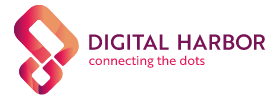The new paradigm in Case Management: Social Case
Being a critical element in diverse industry scenarios, we have many case management systems in the market. One might presume that these indeed cater to the requirements of the digital era.
However, a closer look at these systems reveal that they are scarcely better, in function or scope, than Record Management Systems. In seeking to simply digitize existing processes, many capabilities vital for this age have been left out of the system’s ambit. While broader capabilities like letter-generation and content management find their way into these systems, they’re unequipped to deal with knowledge-working processes, decision-making processes, and significantly conversations that surround these processes.
Present Scenario…
When we look at Document Management capabilities in these Case Management systems, they’re mostly primitive and standalone. They’re neither a part of the larger scheme of affairs, nor of the structured workflow. The data, typically unstructured, can hardly be repurposed in real-time and involves cumbersome efforts to be extracted and re-used.
The transactions are simpler too: assessment, analytics, analysis, research and decision-support. Communication efforts, say through email and Skype, are again not aligned with the core function. These isolated conversations, so vital in understanding the context and collaborative findings of the case, are lost in the maze of diverse, parallel functions.
Some concepts from social media, such as sharing and messaging have been incorporated into these systems of late. Yet, the in-application messaging that gives contextual heft to conversations in hand are only partially developed.
These capabilities are often at the periphery of workflow and need to be aligned back into the mainstream for utility.
Conversations are the missing link…
We need applications that are ‘social’ to you and make you ‘social’ to others. In other words, we need to empower business-users to have conversation with data and converse about data with others.
The key to unlocking this approach is to tie together data, documents and conversations.
This changes the way enterprises approach Case Management totally. It becomes a different beast altogether, capable of processes that at once make the business-users work simpler and easy, and at the same time empowering him to take informed decisions faster.
The documents are now provisioned with ability to pick of re-usable bits of data on-demand, and, significantly, tagged to the conversations revolving them.
Success Story: Know Your Provider
Let us briefly summarize few important facets of how Social Case concepts were applied in ‘Know Your Provider’ (learn more here).
Performing three primary tasks around 1) application 2) audit 3) assessment , it takes a 360-degree view of the Provider’s profile with unprecedented efficiency. While a worm’s view of the solution warrants a comprehensive review, at the bird’s eye level, what pushed the envelope was that it fundamentally altered the way Case Management was performed by infusing a ‘social’ orientation into its very workflow.
Importantly, it offers:
- Conversational user-experience, where application guides user.
- Shared review, expertise and assessment, a new way of collaboration breaking free from the inherent constraints of existing frameworks
- A shared services platform, where the analyst and the applicant (usually on the opposite sides of interaction) work as one team
Tying data, documents and conversation brings a whole new world of benefits:
- It lowers conventional barriers to prompt client engagement by equipping case-workers with ubiquitous access to data, expertise and conversations that readily establish the context.
- Enables quick deployment of the solution with faster results due to agile workflow and readily access to re-usable data which can repurposed on-demand.
- Helps build a 360-degree view of the profile that examines with microscopic detail the diverse, related aspects that merit consideration in the specific scenario of risk and fraud prevention.
Streamlines the information so that the data keeps on aggregating based on the conversational tags, topical tags etc., which are then cross-linked and categorized accordingly. This enables ready access to data, documents and conversations that’s capable of instantly yielding fresh insights.
